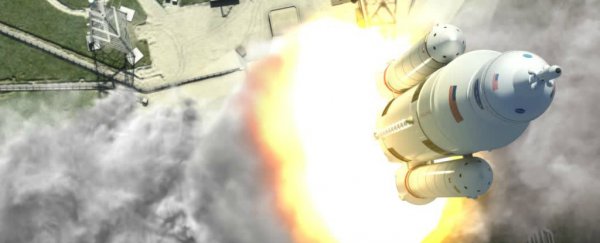March 14 is Pi Day, and instead of letting us just sit back and celebrate with a piece of pie, NASA has decided to put us to work by releasing some real-life rocket science problems for us to solve.
While most of us are aware that pi is the ratio of a circle's circumference to its diameter, it's not something we use often outside of maths class - unless you're a NASA scientist or engineer, that is. The space agency uses the constant all the time to solve common space travel problems, and now it wants to see if you're up for the challenge.
To celebrate Pi Day, NASA has released a series of problems for the public to solve using pi, all based on real-life scenarios where the mathematical constant might come in handy - from identifying the habitable zone of the newly identified Trappist-1 star system, to predicting the coverage of this year's 'great American eclipse'.
It's #PiDay! Can you use π to solve these stellar math problems faced by NASA scientists and engineers? https://t.co/FFKjLLD9AX pic.twitter.com/bBPJlSnDRt
— Space 360 (@Space360HQ) March 14, 2017
"Pi isn't just a fancy number. It actually powers NASA spacecraft, keeps the Mars rover's wheels spinning, lets us peer beneath the clouds of Jupiter and gives us new perspectives on Earth," NASA's Jet Propulsion Laboratory wrote on Pi Day back in 2014.
Before you get stuck into the problems, which you can access in full here, don't worry too much about how many digits of pi you're able to remember off the top of your head - that's not what matters here.
Although scientists can now calculate more than 22 trillion digits of pi, the reality is that even NASA engineers don't need that many to get us to the farther reaches of our Solar System - and beyond.
Marc Rayman, the director and chief engineer for NASA's Dawn mission, explained on Facebook last year that his team only really uses 15 digits of pi - 3.141592653589793. And they've managed to get their spacecraft all the way to Ceres and Vesta, so you know it works.
As he explained last Pi Day:
"The most distant spacecraft from Earth is Voyager 1. It is about 12.5 billion miles [20.1 billion km] away. Let's say we have a circle with a radius of exactly that size (or 25 billion miles [40.2 billion km] in diameter) and we want to calculate the circumference, which is pi times the radius times 2. Using pi rounded to the 15th decimal, as I gave above, that comes out to a little more than 78 billion miles [125.5 billion km].
We don't need to be concerned here with exactly what the value is (you can multiply it out if you like) but rather what the error in the value is by not using more digits of pi. In other words, by cutting pi off at the 15th decimal point, we would calculate a circumference for that circle that is very slightly off. It turns out that our calculated circumference of the 25 billion mile [40.2 billion km] diameter circle would be wrong by 1.5 inches.
Think about that. We have a circle more than 78 billion miles [125.5 billion km] around, and our calculation of that distance would be off by perhaps less than the length of your little finger."
That's pretty incredible.
But if you wanted to be really thorough, Rayman explained that if you used 39 or 40 digits of pi, you could calculate the entire visible Universe - an area with the radius of around 46 billion light-years - "to an accuracy equal to the diameter of a hydrogen atom".
So, with any concerns about your inadequate pi memorisation skills placated, let's get stuck into these new NASA problems.
The first challenge the space agency sets is to do with calculating the ejecta pattern of craters on the surface of Mars using pi to predict at which angle debris hit the planet's surface in order to form the crater.
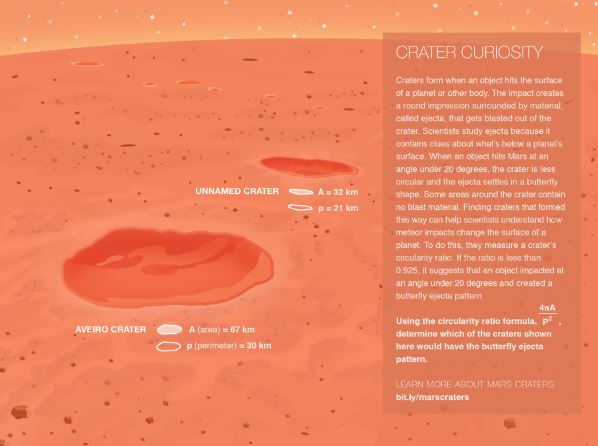
The space agency then asks us to calculate the amount of Earth's surface area that will be covered by the disc of the Moon's shadow during the 'great American eclipse' on 21 August 2017.
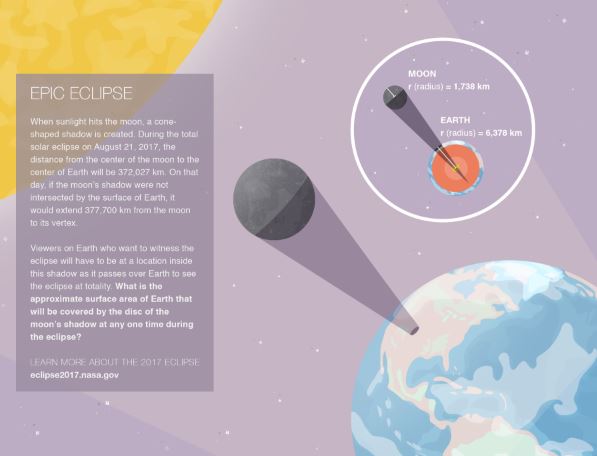
After that, NASA needs you to calculate when Cassini will plunge into Saturn's atmosphere later this year after more than 12 years orbiting the planet (RIP Cassini).
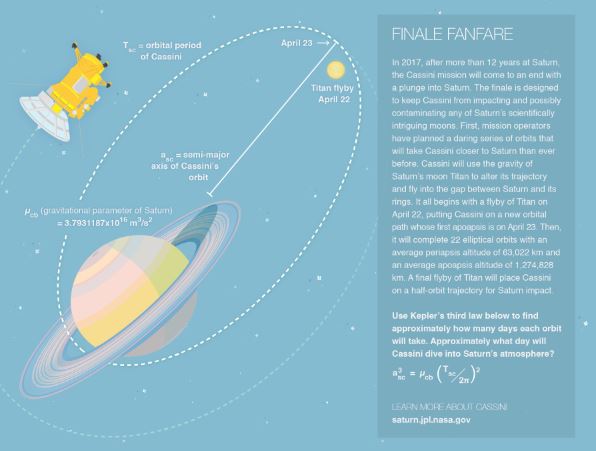
Finally, it's up to you to identify the inner and outer limits of our 'sister star system' Trappist-1's habitable zone.
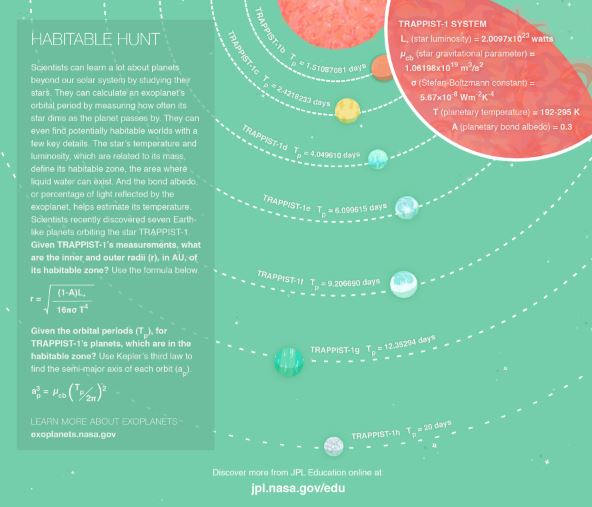
You can see all these problems laid out in poster and interactive format over on NASA's site.
And you can even download a high-res poster of the problems for your classroom or home (who doesn't want to think about the demise of Cassini on the back of their toilet door?)
If that's not enough for you, don't worry, because NASA's also gone and added a bunch of 'extension problems' for those who want to keep going with the maths fun. You can access them here.
And if you find all of these puzzles easy and fascinating, it could be a sign that you might have a future working as a NASA scientist or engineer. Don't forget us when you make it to Mars!
